

 |
 |
 |
On November 19th and 20th 2025 N. Ireland experienced it's first cold spell of the season when polar air would introduce frosty nights, scattered snow showers and two days of yellow warnings. I ended up surprised just how photogenic this two day event turned out to be. I wasn't expecting much on the 19th until two cells approached Moneymore then Cookstown producing the most spectacular snow curtains I've ever seen in my life. The 20th brought several inches of laying snow and beautiful scenes over the Sperrins at Mullaghmore, Eagle's Rock & Birren Road. Two exciting days of drone filming in the first snow of the season. One page report with 31 images and 3 video clips. - REPORT.
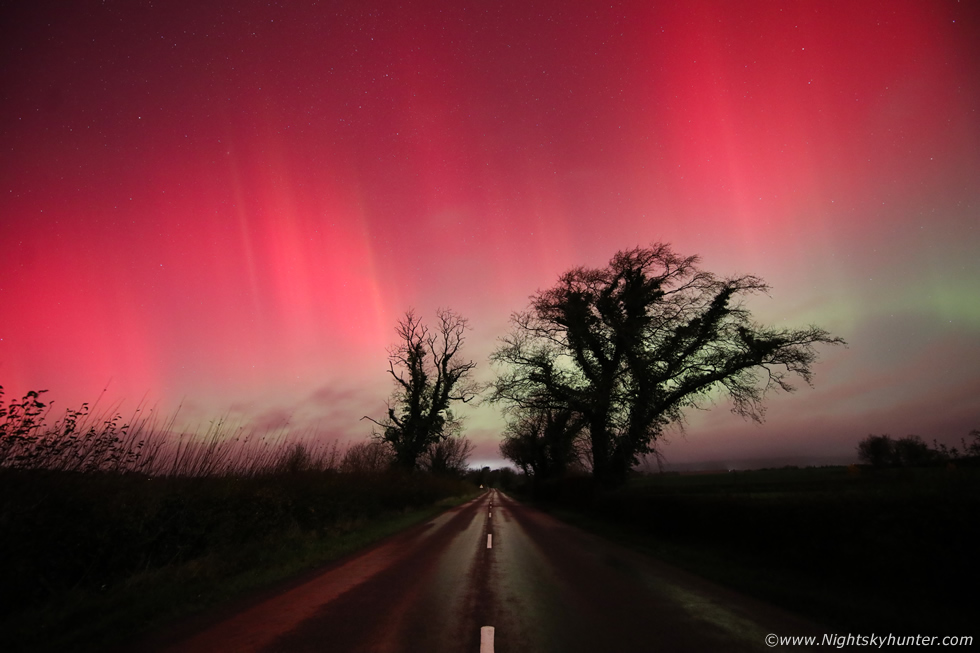 |
I had almost given up on seeing a good aurora this year due to cloud cover. Then on November 11th/12th 2025 two CMEs impacted the Earth's magnetosphere after midnight delivering a severe G4 geomagnetic storm which turned out to be the third strongest of the solar cycle. The sky suddenly cleared so I drove out and by chance found a location near Lissan outside Cookstown. The CME arrived with the Bz diving below -40, the result was a spectacular red aurora. The sky was on fire with reds and pinks punctuated by tall beams dancing aloft, the highlight was standing in the middle of a country road until 4am with crimson rays dancing over the dark outline of a group of trees which resulted in a wonderful photo opportunity. One page report with 20 images. - REPORT.
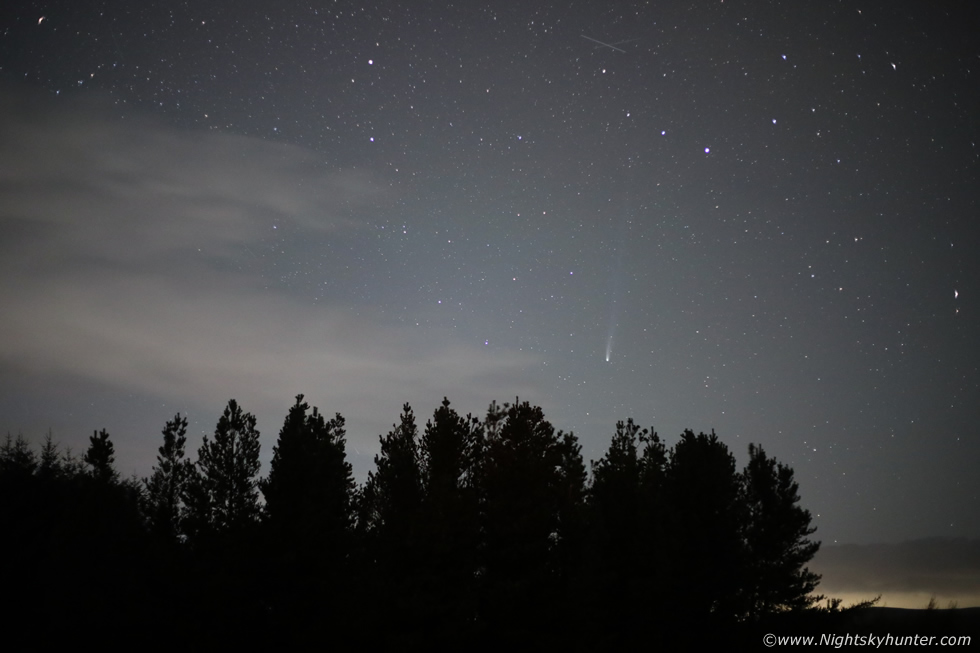 |
October 2025 was the month for comets with several interesting visitors in our skies. However the highlight was C/2025 A6 Lemmon, a long period comet which became much brighter than expected. Original forecasts went for a mag+10 peak however the comet over performed reaching mag +3.5 becoming visible to the naked eye and perfectly placed in our evening skies after dark with the highlight during the moonless period. This report documents several nights battling cloud to see the comet. I ended up impressed, at its peak I observed a 10 degree naked eye tail pointing straight up into the star fields of Corona Borealis. Another highlight was capturing a fireball in the same image as the comet. One page report with 20 images. - REPORT.
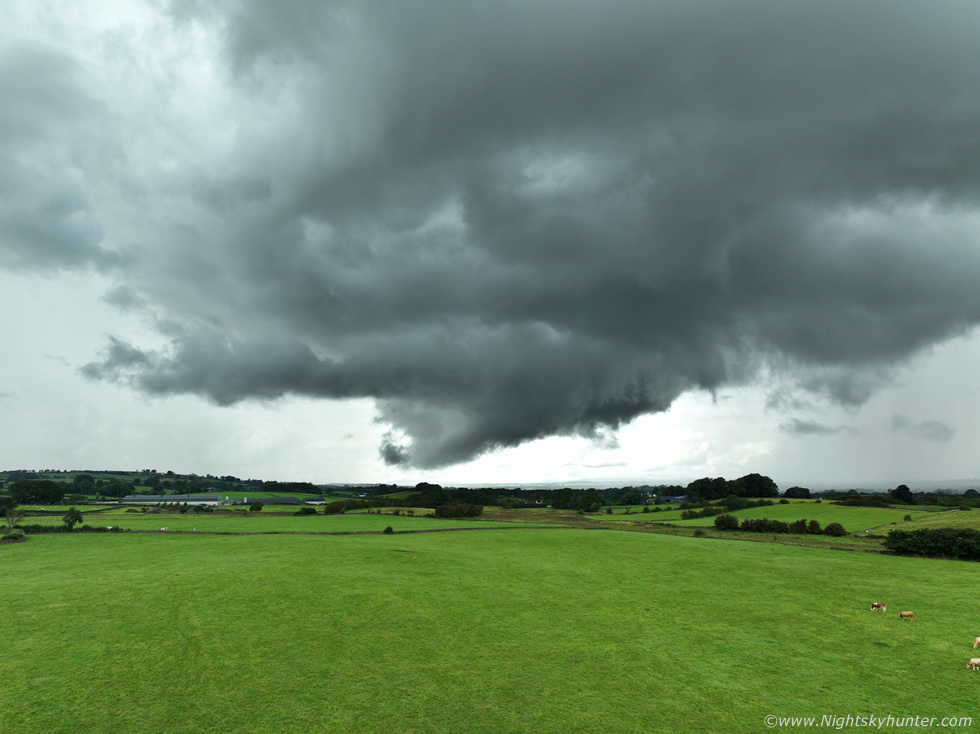 |
On September 4th 2025 we had a late season set-up with 500 CAPE on a Wly flow. E parts of NI looked best but my expectations were low due to the absence of strong shear. I met Colleen Webb while crisp updraughts began to develop rapidly which exhibited strong tilting and a vault which was entirely unexpected. We chased one particular cell to Slemish where we got treated to the best storm structure of the year with leaning updraughts, vented precip, a well formed dark base with striation lines with black scud tags swirling and rotating below. Then a dramatic lowering formed at close range rotating into what can only be described as a large wall cloud. The cell in essence took on transient supercell traits against all odds, this was followed by the sighting of an impressive white rope funnel cloud during the drive home. One page report with 25 images and 1 video clip. - REPORT.
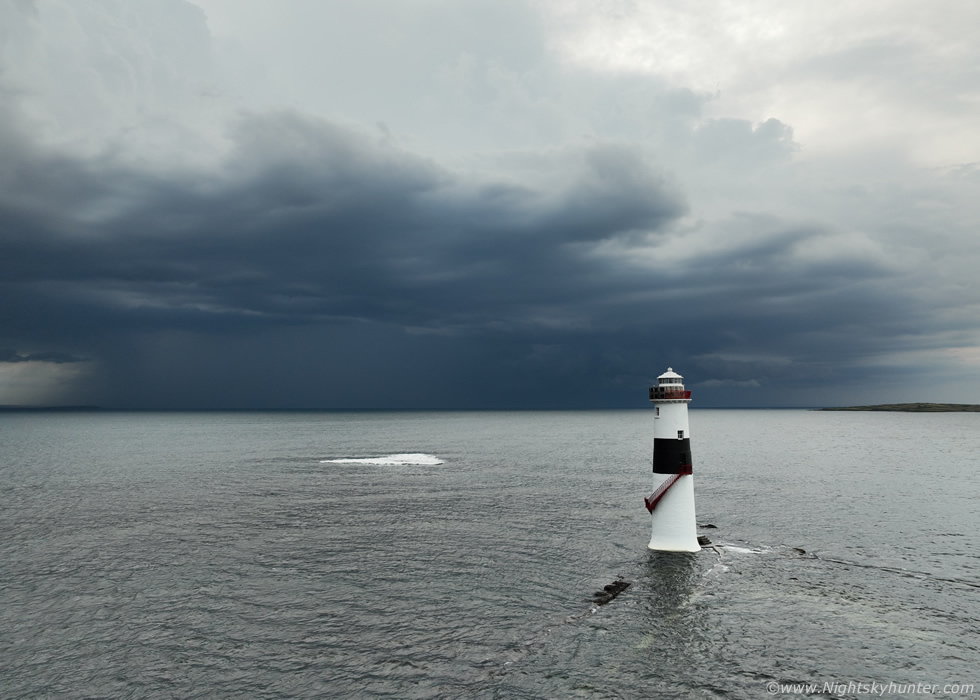 |
Just when I thought the 2025 season was over nature turned the tables with a major thunderstorm set-up over W Ireland. On July 13th big CAPE, strong wind shear, and deep moisture all converged ahead of a cold front resulting in the biggest outbreak of storms this year. My Wife and I decided to chase and turn the day into a road trip. We visited Mullaghmore, Benbulbin, then reached our target area at Rosse's Point in Co. Sligo. From there we watched an enormous highly sheared multicell storm come into view with solid updraughts and anvil sheared out over the sea producing lightning every second for residents below it, then capturing the storm with Black Rock Lighthouse followed night time lightning over Co. Antrim at 2am. This single day has made my entire storm season. One page report with 27 images and 1 video clip. - REPORT.
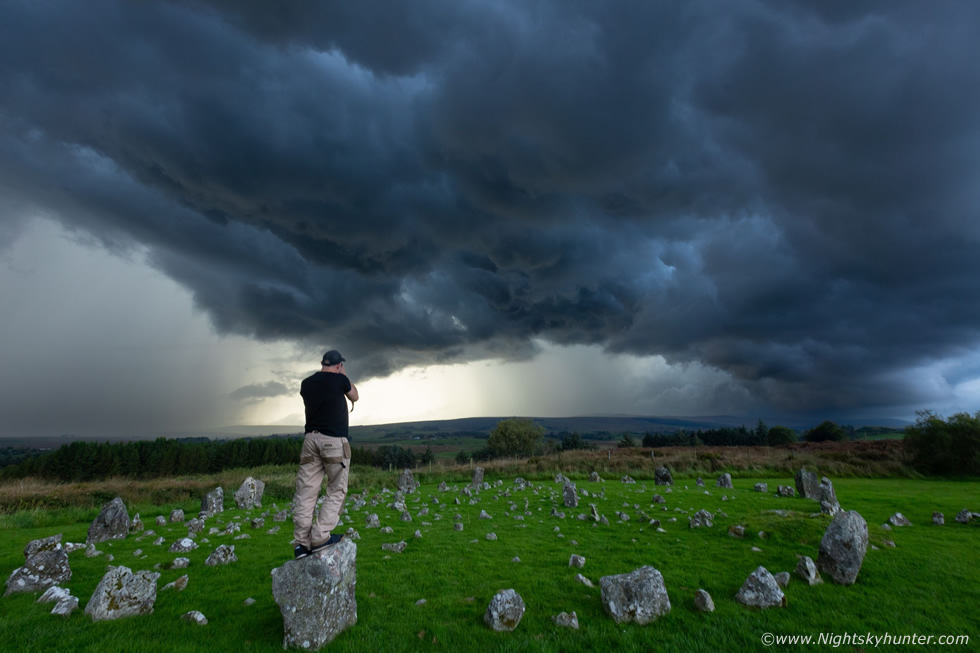 |
Astronomy is not the only subject I'm interested in, check out my N. Ireland Storm Chasing section and view the chase reports and images which detail not only storms but other phenomena such as a moonbows, noctilucent clouds, aurora displays and exciting nature related photo shoots.
Martin McKenna
Home